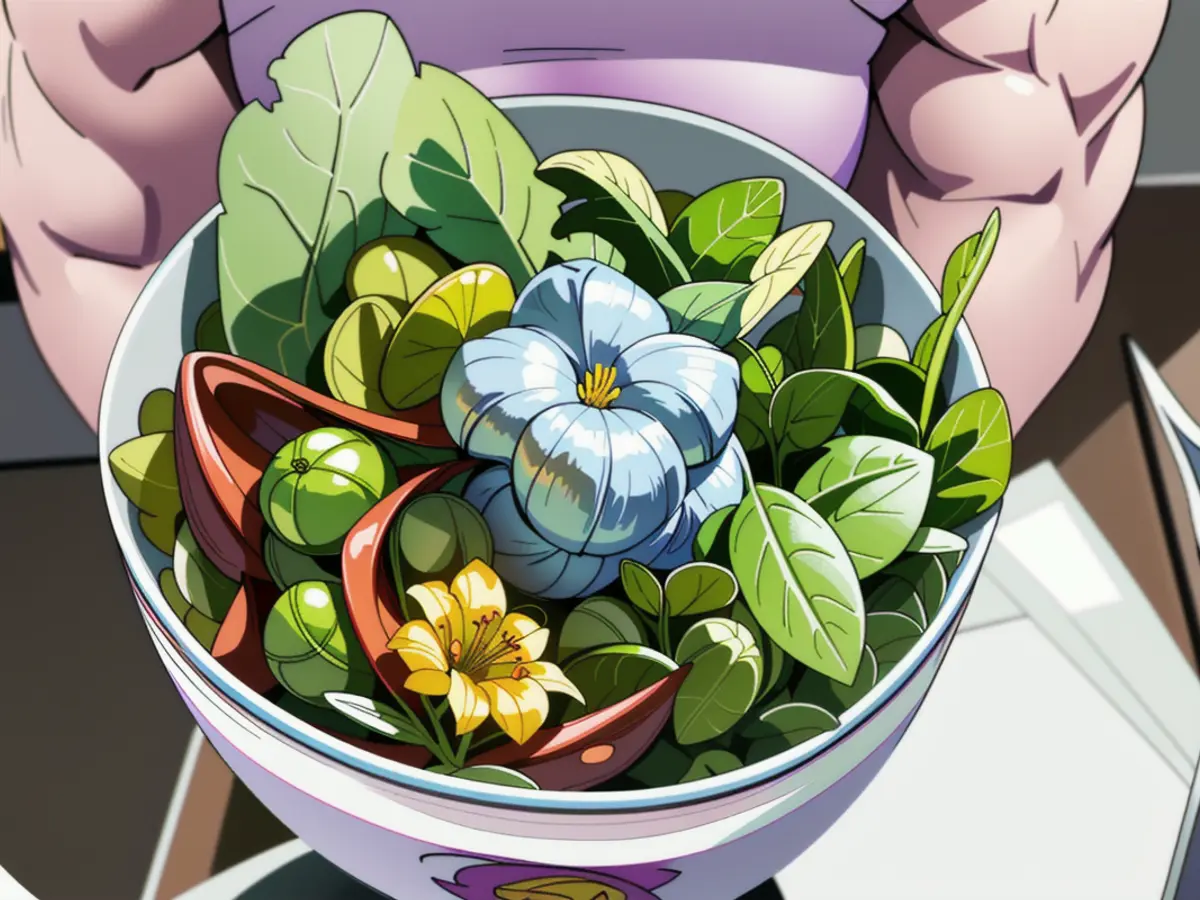Preparing Sorrel, a Tangy Spring Plant Utilized Like Spinach or Other Greens
Get the scoop on sorrel, the zesty herb that will kickstart your taste buds this spring! Known as the "lemonade leaf," sorrel packs a tangy, citrus-y punch that'll make your mouth water. Whether you're cooking up a storm or keeping it casual with a garnish, here's all you need to know about this vibrant green plant.
Let's go straight to the experts:
- Victoria Jabot, a regenerative farmer at Ley Creek Farm in Oswego County, NY, shares her insights on growing and harvesting sorrel.
- Desiree Nielsen, a registered dietician, podcast host, and cookbook author of Plant Magic, offers tips on using sorrel in various recipes.
Storage Tips: Sorrel 101To make your herb last longer, Jabot advises rinsing the leaves briefly, spinning off excess moisture, and storing them in a container with a paper towel in the fridge. Use it within three days for best results, or grow your own and pick what you need daily.
What is Sorrel?Originating from Europe and Asia, sorrel is a member of the Polygonaceae family, best known for its lemon-like taste. The flavor comes from oxalic acid, a compound also found in spinach and rhubarb. While oxalic acid can be harmful in large amounts, consuming moderate amounts of sorrel is safe.
Sorrel SeasonAvailable from late April to early October, sorrel leaves are at their tenderest and most flavorful in springtime. "Sorrel is the first food we can harvest each spring," Jabot says.

Nutritional PerksRich in fiber, antioxidants, vitamins A and C, and minerals like iron, manganese, and magnesium, sorrel is considered a superfood. It's believed to aid digestion and boost the immune system.
Sorrel VarietiesFrom garden sorrel to red-veined, French, and sheep sorrel, there's a type of sorrel for every palate and dish.
Consuming SorrelEnjoy sorrel raw or cooked, depending on your taste and the recipe.
Raw SorrelWhen using sorrel raw, choose the smallest, tenderest leaves. It makes an excellent garnish or adds a surprising zing to salads.
Cooked SorrelFor cooked dishes, use younger, tender leaves to ensure a delicate texture and flavor. "Cooking sorrel will mellow its citrusy-sourness," Nielsen notes.

Preserving Your SorrelBlanching sorrel briefly or making herb cubes helps preserve its bright green color and flavor. Simply blend young leaves with either oil or butter, then freeze the mixture in ice cube trays.
Sorrel in Action: RecipesSavor sorrel all season long with these recipes from appetizers to entrées:
- Salads: Mix a few sorrel leaves into a spring green salad for a refreshing twist.
- Fish: Pair sorrel with seafood dishes, such as salmon served with crème fraîche and lemon.
- Soups: Incorporate sorrel into classic creamy soups or try it in contemporary recipes like creamy broccoli and spinach soup.
- Potatoes: Sorrel complements potato salads or mashed potatoes perfectly.
- Cheese: Whip up creamy sauces with sorrel or use it in cheese-based dishes for a deliciously tangy kick.
Cheers to Sorrel!Ready to give sorrel a try? Its unique flavor and health benefits make it a must-try for any home cook or garden enthusiast. So head to the farmers market, your local grocery store, or even your own backyard, and embrace the tangy delights of sorrel!
- Martha Stewart recommends rinsing sorrel leaves briefly, spinning off excess moisture, and storing them in a container with a paper towel in the fridge for extended use.
- Originating from Europe and Asia, sorrel is a member of the Polygonaceae family, known for its lemon-like taste and high nutritional value, being rich in fiber, antioxidants, vitamins A and C, and minerals like iron, manganese, and magnesium.
- Sorrel is at its most tender and flavorful during springtime, making it a perfect addition to various recipes, such as salads, fish dishes, soups, potato dishes, and cheese-based creations.
- Whether you prefer using sorrel raw for a zingy garnish or cooked for a mellow citrusy-sourness in dishes, Desiree Nielsen suggests using the smallest, tenderest leaves for the best taste.
- To preserve sorrel's bright green color and flavor, blanching the leaves briefly or making herb cubes by blending young leaves with oil or butter and freezing them in ice cube trays is recommended.




